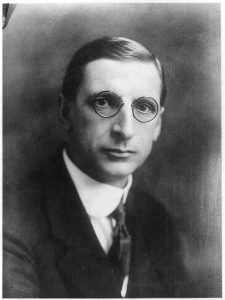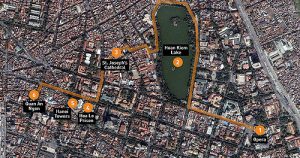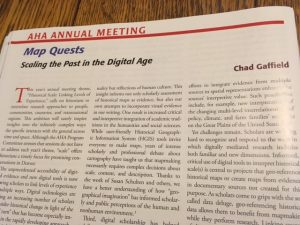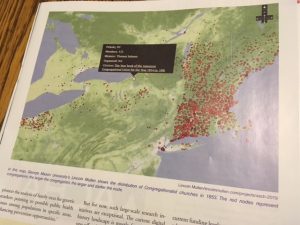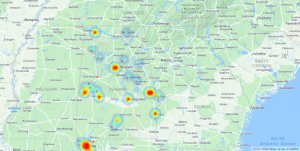Over the past month, I have stretched my DH skills in many areas. I have learned from and collaborated with scholars and continued to lead and manage a digital project moving from the conceptual phase to the development phase. Along the way I have been challenged, encouraged, and inspired. Challenges range from logistics and subject/keyword indexing to defining a public and digital history philosophy. There are three projects that I would like to highlight in this blog post. I sincerely thank all three scholars for meeting and sharing their exciting work in DH with me.
Fort Negley Descendants Project
In particular, I enjoyed meeting Juliet Larkin-Gilmore, a Digital Humanities Fellow and PhD candidate in history at Vanderbilt University. She introduced me to the Fort Negley Descendants Project. Juliet and I are meeting next week to discuss how her work might intersect with Nashville Sites. Last year, Dr. Mickey Casad, the Associate Director of the Center for DH, formed a working group called Black Nashville, which is comprised of graduate students and scholars from all of Nashville’s major universities. One member of this intercollegiate group, Dr. Lea Williams, is also a consulting scholar on Nashville Sites. Dr. Williams is a Professor of History at Tennessee State University. He will be managing the tour content and design for a tour entitled, “Antebellum Black Life,” and it is my hope that Juliet and her team will work with Dr. Williams to build this tour.
Here is an excerpt of the project:
The Fort Negley Descendants Project is an oral history digital archive aimed at preserving the voices and stories of the descendants of the African-American laborers and soldiers who built and defended Fort Negley. The Fort was built in 1862, using a combination of forced labor of enslaved Africans which the Union army in Nashville had rounded up from nearby plantations, and free blacks of Nashville and the surrounding areas, who offered their services in exchange for payment (much of which never materialized). . . . Once built, the fortification was defended by various regiments of the United States Colored Troops against the Confederate forces. Both builders and defenders died in record numbers at Fort Negley in the defense of our union. Recent ground-penetrating radar reports have indicated a high likelihood that their remains still lie on the grounds of Fort Negley Park.
After the war, those who survived settled the nearby historically black neighborhoods of Chestnut Hill, Wedgewood Houston, historic Edgefield, and Edgehill. At the turn of the century, several prominent families from these neighborhoods founded North Nashville and all of the prestigious black institutions residing there- the historically black colleges, businesses, and churches. In the 1950s, these same institutions trained and supported some of the sharpest minds of the Civil Rights movement. There is a long and unbroken connection between the builders and defenders of Fort Negley, and Nashville’s current African-American population.
GeoPACHA
A second scholar I met with through the Vanderbilt Center for DH was Dr. Steven Wernke. Dr. Wernke is working on an exciting geospatial and crowdsourcing project called GeoPACHA project. An Associate Professor and Director of the Spatial Analysis Research Laboratory in the Department of Anthropology, Dr. Wernke also works on a team that is part of Vanderbilt’s Initiative for Interdisciplinary Geospatial Research. Dr. Parker VanValkenburgh, Assistant Professor of Anthropology at Brown University, is the other project manager for GeoPACHA. This project utilizes prgrams such as Spatial Lite, Arc Collector, and Q-Field (Android only). Below find selected excerpts about the project:
GeoPACHA (Geospatial Platform for Andean Culture, History and Archaeology) is a browser-based, edited geospatial platform for discovering and mapping archaeological sites in the Andean region of South America. It is designed to facilitate the identification of archaeological sites through “virtual survey” of satellite and aerial imagery and consists of a simple browser-based interface that enables users to visually scan imagery and plot the locations of archaeological sites to a central GIS database using point themes. GeoPACHA also enables the registry of attribute data with site locations via form-based data entry. A grid-based system tracks coverage and sites are recorded.
As is the case for any form of crowdsourced data, quality control is one of our paramount concerns. GeoPACHA’s tiered editorial model is designed to facilitate control of site identifications and attribute data to create high quality, curated datasets. Initial site locations and attributes entered by registered contributors are saved to a queue. Regional editors then conduct initial review of site identifications and attributes. General editors conduct a final review before committing site location and attribute data to the canonical database.

Dr. Wernke and I plan to meet in late August to see how his Intro to GIS class might contribute and participate in the Nashville Sites Project.
Mappalacia
The third scholar I met was Dr. Chad Berry, Academic Vice President and Dean of the Faculty at Berea College. He is in the process of reviving a digital project, called , that he began as a Professor of History before moving into administration. The digital project was born out of an interdisciplinary project involving the Art, Music, and English Departments, which ran from 1948 through the 1980s. Before getting into the original project and digital project, one must first understand the distinctive mission and history of Berea College. From its website:
Founded in 1855 as the first interracial and coeducational college in the South, Berea College charges no tuition and admits only academically promising students, primarily from Appalachia, who have limited economic resources. Berea’s cost of educating a student for four years is nearly $100,000. A majority of Berea’s students are from the Appalachian region, and while all students are highly motivated their backgrounds are quite nontraditional compared to most college students. Berea College offers rigorous undergraduate academic programs leading to Bachelor of Arts and Bachelor of Science degrees in 28 fields. All students work at least 10 hours per week in campus and service jobs.
Here is a description of the original “Man and the Humanities” project:
Art professor, Dr. Les Pross, taught an interdisciplinary class called “Man and the Humanities.” On the first day students were given a 8.5×11 inch sheet of paper. The assignment had one instruction: Draw or map your community. Student returned the following week with their drawing and an archive was born as Dr. Pross saved each drawing after the term and drawings/maps were dated, filed, and stored.
When Dr. Berry came upon this collection, he saw an opportunity. First he began by digitizing the maps–mostly from the 1960s, 1970s, and 1980s. Second his classes analyzed them and began creating mental maps and discussed points of intersection and connection (nodes, paths, segments), issues of memory, variances in visual representation, and historic periodization. There were many issues with which students grappled. For example, many of these views and features no longer exist because of coal industry, interstates, post-industrial development or rather decline. In revamping the Mappalacia digital project, Dr. Berry hopes to provide a window into Appalachian culture, as well as international and national culture from other home regions of students during these years.
Observations of Dr. Berry’s class included:
- Gender: Male student drawings tend to be more aerial, women more grounded or landscapes
- Race: Sometimes portrayed with railroad tracks, even sometimes labeled, e.g. “Negro” homes or otherwise portraying geographical segregation
- Class: Also represented on many maps representing higher ground for upper class, lower ground for working class
- Other themes, community, industry, lots of railroads, mines
I hope to meet with Dr. Berry again to see how I might contribute to this project moving forward as he also determines the best course forward for taking this project to the “next level.”
All in all, these meetings and exposure to scholarly DH projects allowed me to see many other possibilities for the wide-range of subjects, scope, and meaning for the Digital Humanities for students, for potential users, and for the larger, common good.
Additional Reference:
Bill Rankin, After the Map: Cartography, Navigation, and the Transformation of Territory in the Twentieth Century, University of Chicago Press, 2017.
